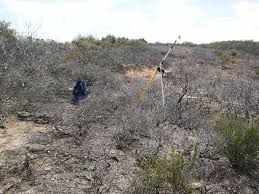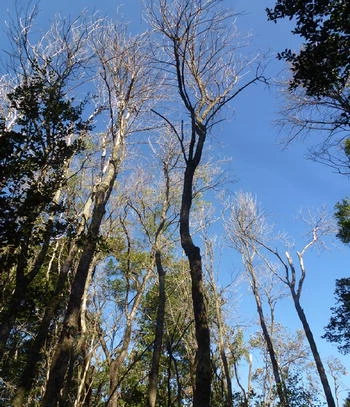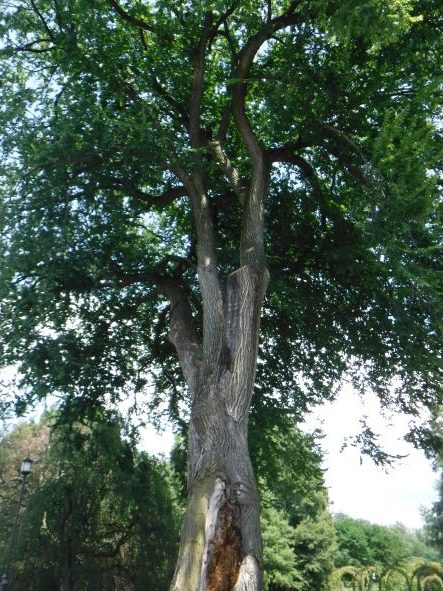While I blog often about wood packaging the fact is that imports of live plant [= “plants for planting” in USDA’s terms] have historically posed a higher risk of introducing tree-killing pests. In 2012, Liebhold et al. found that nearly 70% of 455 damaging pests introduced to the continental U.S. as of 2006 had probably been introduced via plant imports. These included 95% of sap feeding and 89% of foliage feeding insects and about half of the pathogens. Imported plants not only carry a greater variety of pests than wood packaging; they also carry many more.
Introductions on imported plants for planting is not a rare event. An analysis of data in the Agriculture Quarantine Inspection Monitoring (AQIM) during 2009 found that the approach rate of pests on imported plants was apparently 12% (Liebhold et al. 2012) — more than 100 times higher than the 0.1% approach rate found by Haack et al. (2014) for wood packaging. This alarming statistic receives less attention than warranted because APHIS objected to the accuracy of other aspects of the study.
APHIS has adopted changes to its phytosanitary system for plants for planting in the decade since 2009. The question is, have these changes reduced the known risks associate with live plant imports – especially given skyrocketing imports? Are more measures necessary? Current data and analyses cannot provide a scientifically valid answer.
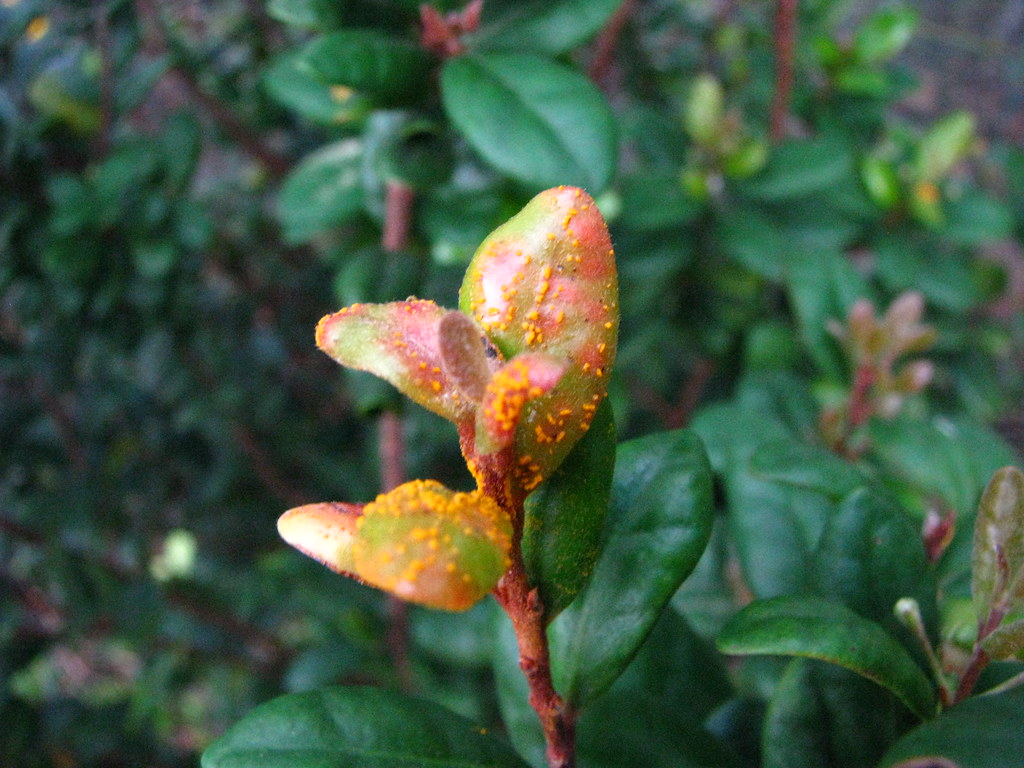
First, most studies focus on insects – they even exclude pathogens. Among pathogens introduced in recent decades, probably by the plant trade, are several Phytophthoras, rapid ‘ōhi‘a death, beech leaf disease, boxwood blight. (I am assuming that the Fusarium dieback disease vectored by Euwallacea beetles was introduced via wood packaging.) There have been repeated detections of the Ralstonia solanacearum Race 3 biovar 2, a bacterium that attacks a range of herbaceous plants, despite APHIS requiring specific integrated pest management programs in producing nurseries located in Central America. Examples of recently introduced leaf feeders include the European beech leaf-mining weevil and elm zigzag sawfly.
I concede that it is difficult to study introduced pathogens. It is nearly impossible to compile a complete list of introduced fungi and related organisms since only the most damaging are typically detected and their native ranges are frequently undeterminable. However, European forest pathologists are much more active on these questions. Why? What can we do to focus Americans on the threats these organism pose?
Second, most studies analyzing the pest risk associated with plant imports use port inspection data. However, port inspection data are not reliable indicators of the pest approach rate – as explained by Liebhold et al. 2012 and Haack et al. 2014 (as it pertains to wood packaging). Thus, most of the analyses carried out by Liebhold et al. and MachLachlan et al. (2022) are based on the pests found by APHIS inspectors: actionable pests were detected on only 2.6% of the incoming plants that they inspected.
Here I discuss two recent discussions of the risk associated with imported plant for planting. One is an analysis of establishments of one order of insects in the United States over 200 years (MacLachlan et al. 2022; full citation at the end of the blog). Again, the focus is on insects! The other is a discussion of the pathway during the recent annual meeting of the Continental Dialogue on Non-Native Forest Insects and Diseases. link to posting of presentations This discussion raised some of the key questions, although no answers were provided.
U.S. imports of plants have increased by more than 400% since the 1960s; 35% in just the last 15 years (in 2007 the U.S. imported approximately 3.7 billion plants [Liebhold et al. 2012]; in 2021 it was about 5 billion [MacLachlan et al. 2022]. Yet establishments of new non-native insects associated with this pathway have not risen commensurately. MacLachlan et al. (2022) attempt to answer why this is so. However, pests are often not detected for several years or a decade after their introduction. Furthermore, I doubt that an analysis based on inspection data, not the more reliable AQIM data, can provide an accurate assessment.
To clarify the pest risk associated with plant imports, studies of some insect types, excluding pathogens, is not sufficient. Again, APHIS should update the Liebhold et al. study to determine the approach rate for all types of organisms that threaten North American tree species. Any such study should include trees on Hawai`i, Guam, Puerto Rico, and other U.S possessions and territories. These islands are usually excluded from analyses of imported pests, including Liebhold et al. 2012. I concede that there are probably scientific and data-management challenges but these islands are immensely important from a biodiversity point of view, and they are parts of the United States!
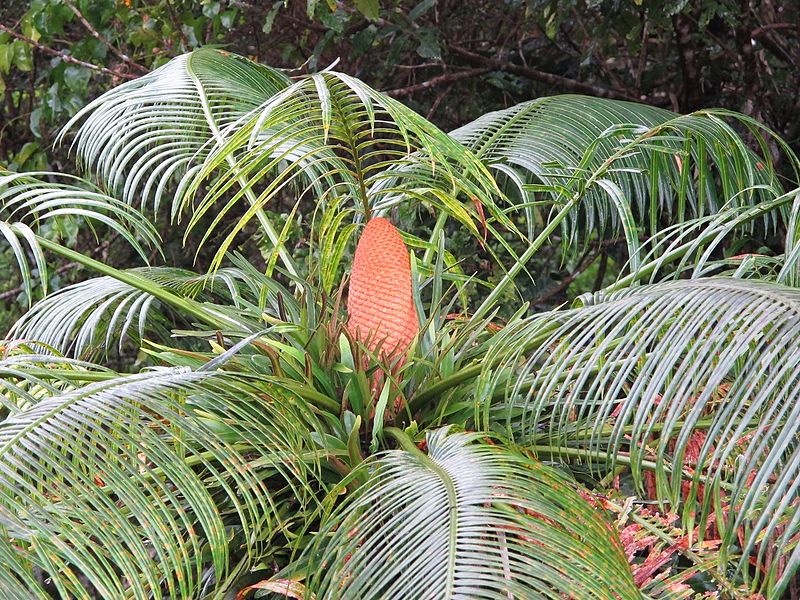
MacLachlan et al. (2022) focused their analysis on the insect order Hemiptera, including the so-called true bugs, including cicadas, aphids, planthoppers, and leafhoppers. This is the insect order most frequently transported with imported plants. In addition, establishments of Hemiptera can be attributed to plant imports rather than to wood or other vectors. Of the 3,500 species of non-native insects established in North America (including the contiguous U.S. states, Alaska, and Canada), about 27% are Hemiptera. Many are serious pests, e.g., hemlock woolly adelgid and balsam woolly adelgid). Complicating the analysis, however, is the fact that some Hemiptera are inconspicuous so they are difficult to detect. In fact, MacLaughlan et al. 2022 estimate the median delay between introduction and detection to be 80 years! They believe that many introduced species remain undiscovered, ranging from 21% for Eurasian regions to 38% for the Neotropics and 52% for Australasia.
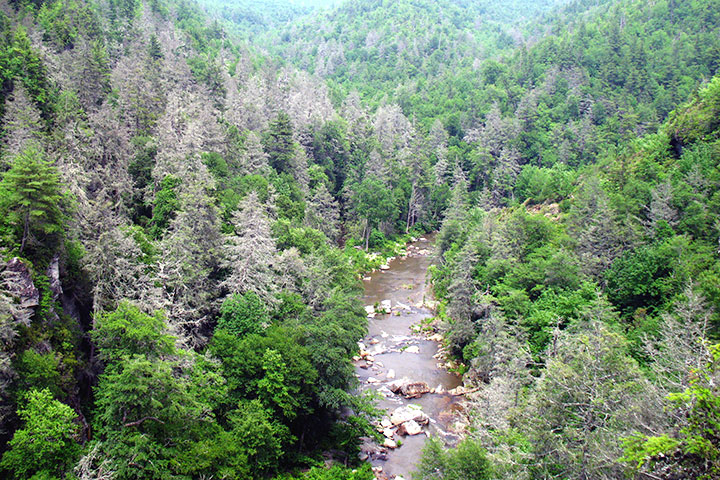
MacLachlan et al. (2022) compare the relationship between plant imports and discoveries of Hemiptera from 1800 to the present in an attempt to answer the puzzle of why new Hemiptera establishments have remained relatively steady despite quadrupled plant imports. Perhaps the pool of novel insect species in the source region has been depleted. Or other factors might have changed, such as
- the commodities imported (plant species or types; or geographic source)
- phytosanitary measures applied by the U.S.
MacLachlan et al. (2022) tracked plant imports since 1854 from seven ecological regions: Afrotropic, Asian Palearctic, Australasia, European Palearctic, Indomalaya, Nearctic, Neotropic. In the early decades, both imported plants and introduced Hemiptera detected in the U.S., came predominantly from European and Asian Palearctic regions. Now, however, almost no new Hemiptera species are being introduced on plants imported from the European and Asian Palearctic regions. Since the 1950s, estimated establishments from the Indomalaya region have remained relatively stable. Establishments from the Neotropic and Afrotropic regions rose following World War II and have remained relatively high. After also declining in the first half of the 20th century, establishments of new species from Australasia have recently increased.
Generally, the regions associated with declining establishments of new species (Eurasia) are experiencing relatively gradual increases in their exports to the U.S. Those regions which contribute relatively steady or increasing establishments (Neotropics, Indomalaya, Australasia, and Afrotropic) have each undergone rapid increases in exports to the U.S.
Establishment Risk Among Regions
Source regions vary in the type of plants they export (e.g., rootless cuttings v. whole plants) and in the volume of exports. They also differ in the composition of their indigenous and introduced insect populations. Imports from areas with an abundance of species capable of establishing and adapted to environmental conditions in North America pose greater establishment risk, although it is challenging to determine the risk associated with individual species.
Establishment risk of shipments from a particular region also changes over time. The number of potential new species of invaders might shrink as more and more arrive in North America. (This situation has no effect on the continued introduction of insect species already established in North America. These reintroductions might arrive in new areas – so expanding the area at risk; or their increasing number contributes to propagule pressure at establishment sites.) Another factor might be phytosanitary policies. Strengthening of phytosanitary measures might suppress the number of organisms that travel with the plant shipment, enter North America, and establish. The opposite might happen if phytosanitary measures are relaxed or if the sourcing or type of imports diversifies in ways that connect additional species in source regions with trade pathways.
Considering all regional plant sources, MacLachlan et al. (2022) estimate that establishments per unit of additional imports – of Hemipterans – have shrunk because of a combination of increased imports, accumulated introductions associated with past imports, and the passage of time. These decreases are substantial – between 75.2% and 99.8% for the various regions from 1962 to 2012. For the Asian Palearctic and Neotropic regions, MacLachlan et al. (2022) determined that depletion of species pools is a contributing factor. Other factors are thought to explain the substantial decline in establishment likelihood for the other regions. However, note the caveats above re: lag times in detecting introductions.
However, despite that significant decrease in risk per unit of imports, the number of establishments has remained relatively constant over the past century. MacLachlan et al. (2022) attribute this pattern to the decreases in marginal risk from additional imports being offset by substantial increases in overall import levels and diversification of the origins of imports across regions, which exposed the U.S. to new source species pools.
MacLachlan et al. (2022) suggest that APHIS should target biosecurity resources to the specific commodity-country pairs associated with a demonstrated higher relative risk of introducing additional insect species.
MacLachlan et al. (2022) are unable to evaluate the efficacy of APHIS’ most important policy change: creation of the “Not Authorized for Importation Pending Pest Risk Assessment” (NAPPRA) program because it was adopted in 2011 and they analyzed data only through 2012. A decade later this policy restricts imports of about 250 taxa (Regelbrugge to Continental Dialogue). It is certainly time to evaluate its efficacy through a new study of pest approach rates in the “plants for planting” trade.
I do not think that U.S. phytosanitary policy should be based on an analysis of just one of at least three types of pests that travel via the pathway. We need analysis of the risk from pathogens, nematodes, viruses … and other orders of arthropods.
The Continental Dialogue on Non-Native Forest Insets and Pathogens
The Continental Dialogue on Non-Native Forest Insects and Pathogens hosted a discussion of the risk of pest introduction via the plant trade during its recent annual meeting. Participants asked: How can the international phytosanitary system curtail introductions of unknown organisms when it is based on risk assessments that address only species that are fully known and – usually – have proven to be invasive elsewhere.
In recent decades, tens of species of Phytophthora have been introduced to countries around the world. Myrtle rust (Austropuccinia psidii) has been introduced to 27 countries from the U.S. to Australia and South Africa. The two causal agents of boxwood blight has been introduced to at least 24 countries in three geographic areas: Europe and western Asia; New Zealand; and North America. The ash decline fungus has been introduced across Europe. Most of these species were unknown to science at the time of their introduction. Other species were known – but not believed to pose a threat because, in their native regions, their co-evolved hosts are not harmed.
For more than a decade, scientists have noted that the international phytosanitary system has failed to prevent this rapid worldwide spread of significant pathogens via the international nursery trade. Examples include Brasier 2008; Liebhold el. al. 2012; Santini et al. 2013; Roy et al. 2014; Eschen et al. 2015; Jung et al. 2015; Meurisse et al. 2019; O’Hanlon et al. 2021.
During the Continental Dialogue discussion, Craig Regebrugge, Vice President of AmericanHort (the principal nursery trade association) noted the economic importance of greenhouse and nursery production and the importance of offering novel plants to their customers. Also, he noted that U.S. retail nurseries import primarily unrooted plant cuttings. In so doing, they have a strong incentive to ensure that they are pest-free in order to avoid delays arising during inspections. Those delays would probably kill these highly perishable products. Most U.S. imports of “finished” plants come from Canada. There have been pest problems; one of the most recent examples is a moth that attacks boxwoods (Buxus), which is the top-selling shrub crop in the U.S. Earlier there was confusion over whether plants shipped from British Columbia had been infected by the sudden oak death pathogen.
Regelbrugge noted that the industry’s voluntary integrated pest management program – Systems Approach to Nursery Certification (SANC) – currently has about two dozen participating nurseries. Hoped-for adoption by more of the hundreds of production nurseries in the country has been delayed by COVID-related travel restrictions, but he hopes to restore momentum. The industry is looking for opportunities to strengthen the program through marketing messages.
Regelbrugge and a second speaker, Rebecca Epanchin-Niell of the University of Maryland, warned that prohibitions on imports will stimulate smuggling. Both raised concerns about direct-to-consumer sales by e-commerce vendors and sought ideas on how to change the behavior of both exporters and consumers.
Later Sarah Green of British Forest Research asked the APHIS representative whether the agency’s import procedures are working to prevent introductions. She pointed to the issues raised by the scientific sources I cited above: pest risk analyses address only known organisms, so this process cannot protect importers from unknown organisms. She noted that the United Kingdom is struggling to contain a number of introductions of previously unknown pathogens. Gary Lovett of the Cary Institute noted that this weakness of pest risk assessments also hampers U.S. attempts to prevent introductions – especially of pathogens. He called on the Dialogue to focus on the resource at risk – native and urban forests – and change our phytosanitary programs on this basis. He has advocated halting imports of plants that are congenerics of important North American tree species, in order to minimize the risk that pests that damage those genera will be introduced.
Jiri Hulcr of the University of Florida tried to reassure Dialogue participants by stating that recent research has substantially reduced the threat from “unknown unkowns”. I applaud Dr. Hulcr’s efforts to reduce scientific uncertainty about the invasive potential of pathogens native to regions other than North America. His study might be the largest attempted by U.S.-based scientists. However, I note that his study assessed the threat posed by 55 insect-vectored fungi to two species of oak and two species of pines. The forests of the southeastern U.S. comprise many other tree genera! He also set a very high bar for defining a threat as serious: the damage to the host must be equivalent to that caused by Dutch elm disease or laurel wilt. Both have devastated their respective hosts. I believe U.S. phytosanitary policy must aim at protecting the full range of native species. Furthermore, levels of damage that affect the host’s role in the ecosystem – not just rapid mortality — should not be acceptable.
SOURCES
Epanchin-Niell, R., M. Springborn, an A. Lindsay. 2016. Resources No. 193 Fall 2016. http://www.rff.org/files/document/file/RFF_Resources_193_Web.pdf
Li, Y. C. Bateman, J. Skelton, B. Want, A. Black, Y-T. Huang, A. Gonzalez, M.A. Jusino, Z.J. Nolen, S. Freemen, Z. Mendel, C-Y. Chen, H-F. Li, M. Kolarik, M. Knizek, J-H. Park, W. Sittichaya, P.H. Thai, S-I. Ito, M. Torii, L. Gao, A.J. Johnson, M. Lu, J. Sun, Z. Zhang, D.C. Adams, J. Hulcr. 2021. Pre-invasion assessment of exotic bark beetle-vectored fungi to detect tree-killing pathogen. Phytopathology. https://doi.org/10.1094/PHYTO-01-21-0041-R
Liebhold, A.M., E.G. Brockerhoff, L.J. Garrett, J.L. Parke, and K.O. Britton. 2012. Live Plant Imports: the Major Pathway for Forest Insect and Pathogen Invasions of the US. www.frontiersinecology.org
MacLachlan, M.J., A. M. Liebhold, T. Yamanaka, M. R. Springborn. 2022. Hidden patterns of insect establishment risk revealed from two centuries of alien species discoveries. Sci. Adv. 7, eabj1012 (2021).
Posted by Faith Campbell
We welcome comments that supplement or correct factual information, suggest new approaches, or promote thoughtful consideration. We post comments that disagree with us — but not those we judge to be not civil or inflammatory.
For a detailed discussion of the policies and practices that have allowed these pests to enter and spread – and that do not promote effective restoration strategies – review the Fading Forests report at http://treeimprovement.utk.edu/FadingForests.htm
or
